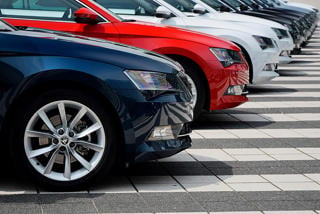Experts are divided as to whether residual values could suffer as a result of a growing new car market.
Registrations look like they will end the year up 10% on last year’s figures, at about 2.2 million units. However, every other major new car market in Europe is still either declining or close to flat year-on-year.
It has led to manufacturers being accused of forcing the market and some pricing experts predicting a residual value shock in the coming months.
Deloitte’s lead partner for automotive consulting Mike Woodward told delegates at the recent Vehicle Remarketing Association (VRA) conference that 2014 is going to be “a difficult time for used cars in terms of residual values and pricing”.
“If you look over the last 18 months, the UK market has been the second-biggest in Europe for car sales and that’s unnatural,” he said. “We’re typically the third or fourth biggest market in Europe. You have to start thinking that it’s an artificial marketplace.”
VRA conference attendees were asked for their predictions of used car values over the next 12 months and 38% of respondents said there would be no change, while almost half (46%) predicted a fall in RVs.
However, only 8% believed they would fall by more than 3%, compared with more than a third (38%) who suggested a reduction of between 1-3% was most likely. Today’s new cars are tomorrow’s used cars and Craig Smith, commercial director at Autofutura, predicts that the used vehicle parc of cars aged between one and four years will grow by 16% over the next three years to just more than nine million vehicles.
The used car market for that vehicle age range last peaked in 2005, at more than 10 million units – 26% higher than today.
Smith said: “It’s no wonder why used car values are particularly strong right now. It looks like this year is going to be as good as it gets.”
The former head of the asset risk team at Lombard Vehicle Management, Smith analysed more than half a million leased vehicles. His analysis revealed a year-on-year reduction in contract term from an average of 44 months in 2010, when residual values were low and leasing rates were high, to an average of 37 months in 2013.
The data showed a similar downward trend for mileages, from an average of 67,900 miles in 2010 to 56,088 in 2013.
Smith said: “I think there’s going to be downward pressure on residual values going forward.”
However, Adrian Rushmore, operation director at CAP, isn’t predicting such a bleak picture for the used car market.
He believes that supply and demand will be broadly balanced if dealers achieve an increase in used car sales. “If that happens, values will increase,” he said. “There are signs it has improved this year and it’s perfectly realistic that balance between supply and demand can be maintained.”
However, a major risk to the used car market, according to Rushmore, is the proliferation of model derivatives, packs and options on new cars.
He suggests that they are not all being recognised on vehicles entering the used car market.
Manufacturers create a MVRIS (motor vehicle registration information system) code, which uniquely identifies the vehicle. “If you’ve got a MVRIS code and a CAP code you can identify the vehicle and you can sell it accordingly,” explained Rushmore.
“However, a lot of these pack models are being missed. On a three-year-old car, it’s about 10% of its value. If these packs get ignored you can see what effect that will have on the price.”






















Login to comment
Comments
No comments have been made yet.